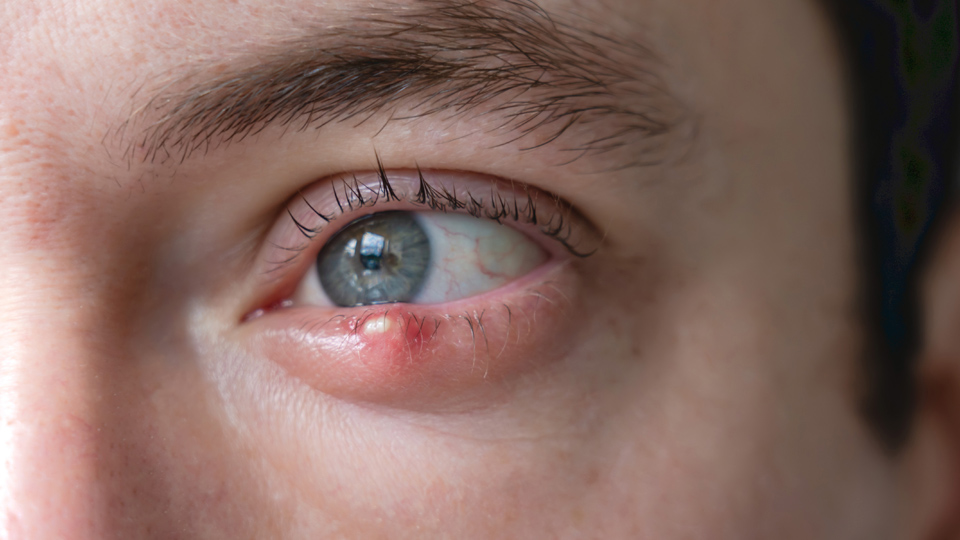17/06/2025
A stye is an acute and localised inflammation of the eyelid margin caused by a bacterial infection. It usually clears up on its own within a few days, but there are treatments that can speed up healing and relieve discomfort.
What is a stye?
A stye is a small red and painful lump that appears on the edge of the eyelid due to an infection of a sebaceous gland. It can be external, when it affects the glands of Zeiss or Moll at the base of the eyelashes, or internal, if it involves the Meibomian glands inside the eyelid.
Causes of a stye
The main cause of a stye is bacterial infection, commonly by Staphylococcus aureus.
Factors that may increase the risk of developing a stye include:
- Poor hygiene: touching your eyes with dirty hands or not removing makeup properly.
- Chronic blepharitis: persistent inflammation of the eyelid margin.
- Use of contaminated or expired cosmetics: these can introduce bacteria.
- Stress: can weaken the immune system, making infections more likely.
Symptoms of a stye
The most common symptoms of a stye include:
- Red and painful lump on the edge of the eyelid.
- Swelling and redness of the eyelid.
- Sensitivity to touch.
- Tearing.
- Sensation of a foreign body in the eye.
- Crusts or sores on the eyelid skin.
Effective treatment for a stye
Most styes resolve on their own within a week. However, to relieve discomfort and speed up healing, it is recommended to:
- Apply dry heat: apply local, dry heat to the eyelids for 7–10 minutes. You can use a mask (some are microwaveable or USB-heated). The heat helps to soften the secretions and promote drainage. Afterwards, a (gentle) massage can help with drainage.
- Maintain good eyelid hygiene: gently clean the eyelid with a mild soapy solution or specific eyelid wipes.
- Avoid using makeup and contact lenses: until the stye has completely healed, to prevent the spread of infection.
- Use a local antibiotic ointment: 2 or 3 times a day, the use of a local antibiotic is recommended (always prescribed by a doctor).
If the stye does not improve after 48 hours, increases in size or affects vision, it is advisable to consult an ophthalmologist.
Depending on the inflammation, in some cases oral antibiotics may be necessary.
Occasionally, after the acute phase, a firm lump remains that is painless and not inflamed – in such cases, surgical removal may be required.
Prevention of a stye
To reduce the risk of developing a stye, it is advised to:
- Wash your hands regularly: and avoid touching your eyes with dirty hands.
- Remove all makeup: before sleeping and do not share cosmetic products.
- Replace makeup products regularly: especially those used around the eyes.
- Maintain good hygiene of contact lenses: following the specialist’s instructions.
- Manage stress: as it may contribute to the development of styes.
- Eyelid care: apply dry heat for 10 minutes once or twice a week and ensure gland drainage.
- IPL (intense pulsed light therapy): in some patients, IPL treatment is indicated. It has shown benefits in improving Meibomian gland dysfunction, supporting their drainage and helping to prevent new styes.
If you experience symptoms of a stye or have concerns about your eye health, do not hesitate to contact us for personalised care.
Dr Ainhoa Martínez Grau, ophthalmologist at the Barraquer Ophthalmology Centre
